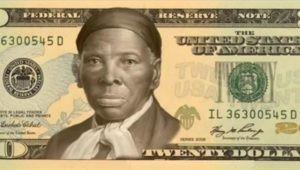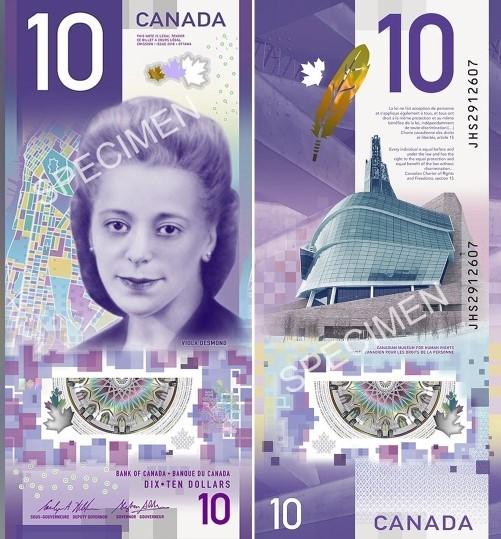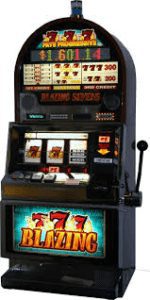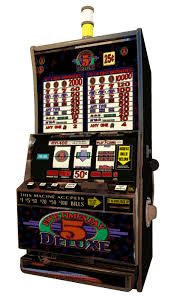Harriet Tubman was born into slavery in 1822 and subject to beatings and whippings by her various master as a child. But she escaped and eventually made some 13 missions to rescue about 70 enslaved people, including family and friends.

When the Civil War began, Tubman worked for the Union Army, first as a cook and nurse, and then as an armed scout and spy. She became the first woman to lead an armed expedition in the war, guiding the raid at Combahee Ferry, which liberated more than 700 enslaved people.
After the war, she retired to the family home on property she had purchased in 1859 in Auburn, New York, where she cared for her aging parents. She was active in the women’s suffrage movement until illness overtook her, eventually dying in 1913.
Clearly, she is deserving of the honor of becoming the first woman on a U.S. Treasury note. That was first proposed as early as 2014 when designs like the one shown were released by the Treasury Department. However, the plan went on “hold” during the Trump years. But, the incoming Biden administration just announced that the bill is back on track. Certainly, all African Americans and feminists everywhere are celebrating this milestone, but maybe not all slot directors.
Technology has made, and will continue to make, things easier. But for now, any new bill distributed to the public means a lot of labor and administrative work for most casinos. In the not-so-distant past, the slot tech team had to physically remove each bill validator and install a new EPROM chip. Flash drives eliminated the EPROMS, but still required removing and reinstalling the B/Vs. It could take 10 minutes or more per game. If you have a small bar with eight machines, that’s no big deal. If your floor has 5,000+ games, it can be a labor nightmare.
The good news is that most providers have (or will soon have) new technology to “flash” all the B/Vs remotely from a central server without removing them from the game. Using the new FUZION® system from JCM, a large casino would update their entire floor in 90 minutes or less. These software downloads are done over your existing network wiring, and there’s no need to even open a single cabinet. JCM’s FUZION is approved now in California and is under lab review in Nevada. Their competitors have also announced similar technologies.
More good news is that if your B/Vs were designed in the last 10 years (most likely they are), you have sufficient “memory” to handle any new bills. That wasn’t the case as recently as 2008 when a flurry of new bills (most triggered by the new $10 note) forced most operators to buy new B/V units, since the old ones couldn’t be upgraded (it was a big capital budget hit all at once).
So, when will Harriet make her debut? Before that event, there may be some other bumps in the road. The new Biden administration means a new Secretary of the Treasury and a new Treasurer. The secretary is Janet Yellen (the first woman in that post ever!). Both her signature (and the soon-to-be-named Treasurer’s) will need to be on every new bill printed of any denomination.
According to David Kubajak, the SVP of Sales, Marketing and Operations at JCM, those signatures may, or may not, trigger new software. Since newer B/Vs are using more advanced digital imaging technology, the new signatures (if they are bold and different enough) could force an update.
Again, when will we see Ms. Tubman sitting alongside of Andrew Jackson in our wallet? First, we’ll take odds that the design shown above will probably not be the one that is eventually released. That’s because the Treasury Department likes to include all the latest security features in any new design. As an example, the last $100 bill added a color-changing ribbon and 3D tactile printing in the new “bell” and “inkwell.” Technology has changed since that $100 was issued in 2013. And even more has changed since the first Tubman designs were previewed in 2016.
 Take a look at the Canadian $10 note that was issued in 2018. It, too, features a black woman (she’s Viola Desmond who was a successful businesswoman that was jailed, convicted and fined for defiantly refusing to leave a whites-only area of a movie theatre in 1946).
Take a look at the Canadian $10 note that was issued in 2018. It, too, features a black woman (she’s Viola Desmond who was a successful businesswoman that was jailed, convicted and fined for defiantly refusing to leave a whites-only area of a movie theatre in 1946).
Her bill contains some very advanced security features, which earned it the “Bank Note of the Year Award” from the International Bank Note Society. It would be hard to imagine that the U.S. wouldn’t take a hard look at some of those improvements. Their bill is a new vertical format (instead of horizontal), and it has a hologram printed on a polymer window. In other words, no one’s going to copy it on an ink-jet printer or a Xerox machine. Plus, there’s a bunch of other secret stuff that is, well, secret.
Unfortunately, getting anyone to talk about the security protocols they are planning for our new $20 bill is harder than getting gold out of Fort Knox.
It isn’t just our government involved in the process, nor just the law enforcement folks like the Secret Service. There’s also a committee that meets regularly, comprised of currency experts, software designers, printing specialists, paper & ink suppliers, and the manufactures of currency counting equipment (that includes the slot bill validators). They all contribute advice about new trends, technology and advanced counterfeit protection. But none of them are talking.
No one at this time will even commit to a date when we could see the new Tubman $20 bill. But history is a pretty good indicator of what’s to come. First, whatever date the Treasury eventually announces, they’ll probably miss their deadline by six months to a year (it always happens). Secondly, in the past, when they announced a new bill (like they did last month), it is usually three years to get that note in the hands of your players. That’s been the pattern on the last new bills released. And that’s only if there are no political issues. That would mean Q1 of 2024.
What could come sooner is the issuance of other new bills containing the new signatures. As mentioned earlier, those may, or may not, require new B/V software. If they do (or the Tubman bill is produced earlier), those changes could cause some problems on the casino floor.


Both the IGT S2000 and the Bally S6000 (shown) were declared obsolete years ago, meaning the manufacturers no longer offer support, parts or software upgrades. However, many slot players, especially those who like high denominations, still love these games. You’ve probably got several in your high limit room now. And on the low denomination side, the Aristocrat MAV500 is another still-popular cabinet that is also obsolete.
While it’s difficult to get a clear answer as to whether the B/V providers or the slot manufactures are responsible, the bottom line is that when new B/V software is issued, it won’t be made available for these classic cabinets. You could still operate these games, but they would reject all new bills.
Thankfully, we probably have months and months to make a plan. Losing the S2000 and S6000 would have been a disaster five years ago, but today several manufactures have produced some great new reel spinners. IGT, Scientific Games, Everi, Aristocrat and others all have new cabinets that can match or exceed the performance of those classic high-denom favorites. Since the RNG on the popular MAV500 video seems to be a preferred target for Russian hackers, you should consider their replacement regardless of the B/V issue. Depending on your floor mix, there may be a few other games which face these same issues.
So, while we should all celebrate the milestones of Harriet Tubman and Janet Yellen, consider this a fair warning that you need to look ahead for the changes these two women will bring to your floor.


